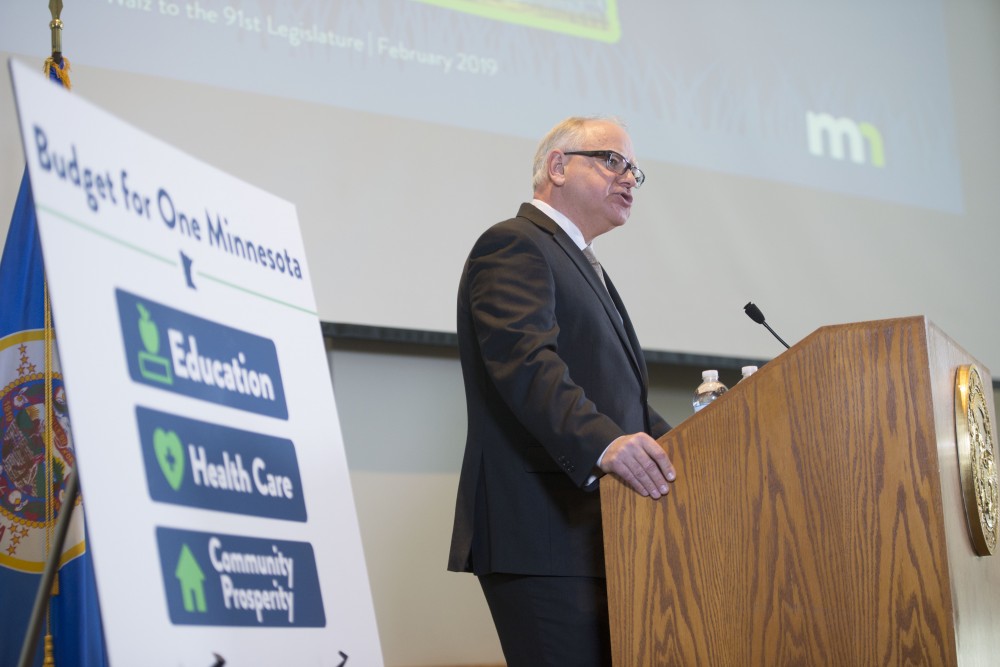Qualifying University of Minnesota students could see their State Grant allocations increase next year as school officials propose possible tuition increases.
The changes to the program, proposed Tuesday as part of Gov. Tim Walz’s biennial budget, would allow a typical University student who uses these grants to see an average award increase of $300. Traditionally aimed at helping students from low- to middle-income families, officials said rising tuition costs have increased students’ needs for the grants.
“I think that the State Grant is helping students meet increased cost[s] because the State Grant has gone up some. It is really helpful for our students,” said Debra Pusari, associate director of financial aid at the University.
State Grant Program recipients are Minnesota residents and generally earn up to $80,000 in annual income.
A total of 7,936 recipients on the Twin Cities campus received more than $39 million last fiscal year. Each award averaged more than $4,900 last year.
But Meredith Fergus, Minnesota Office of Higher Education financial aid research manager, said students at the Twin Cities campus are projected to receive more than $1 million more this fiscal year. The number is subject to further increases next year under the Governor’s proposed budget.
Walz’s budget proposes the State Grant Program receive a $54 million increase for the next biennium.
State grants provide aid for tuition and fees, plus an allowance for living and miscellaneous expenses, allocated to students through a formula. The Department of Education ordinarily enacts a new formula every June, after colleges set tuition.
“A student at the Twin Cities campus is going to get more in grants than the students at Morris or Crookston because the tuition is different. It’s a proportional difference,” said Fergus.
University President Eric Kaler proposed a 2 percent tuition increase for resident undergraduate students on the Twin Cities campus in early January. But some or all of this $258 increase could be offset for many students who qualify for the state grant program, according to Kaler’s recommended operating budget.
The Governor’s proposal could also increase living and miscellaneous expense allowances for students. Currently, the allowances are normally given to students living under the poverty line, Fergus said.
“We do think, given the new concerns about food and housing and security, we want to support students at a level that’s higher than poverty,” Fergus said. “Students are writing off study time for working just so they can have adequate food and housing.”
While Walz will sign budget allocations this spring, lawmakers in higher education committees will first set their own budget recommendations for the grant program, the University and the Minnesota State system.
“When you look at the ecosystem of higher education in Minnesota, there are three big pots that we focus on,” said Sen. Richard Draheim, R-Madison Lake, vice-chair of the Senate higher education committee. “We have to do a balancing act. All of these people want money, and we have to prioritize it.”
Multiple House and Senate bills have been pushed forward this session to reform the grant system. Rep. Jennifer Schultz, DFL-Duluth, a University of Minnesota-Duluth economics professor, said investments in the state grant system are some of the easiest ways to gain higher education support at the legislature.
“I think we need to be investing in the State Grant Program to make college more affordable,” Schultz said. “I think that’s the easiest thing to do to get bipartisan support.”








